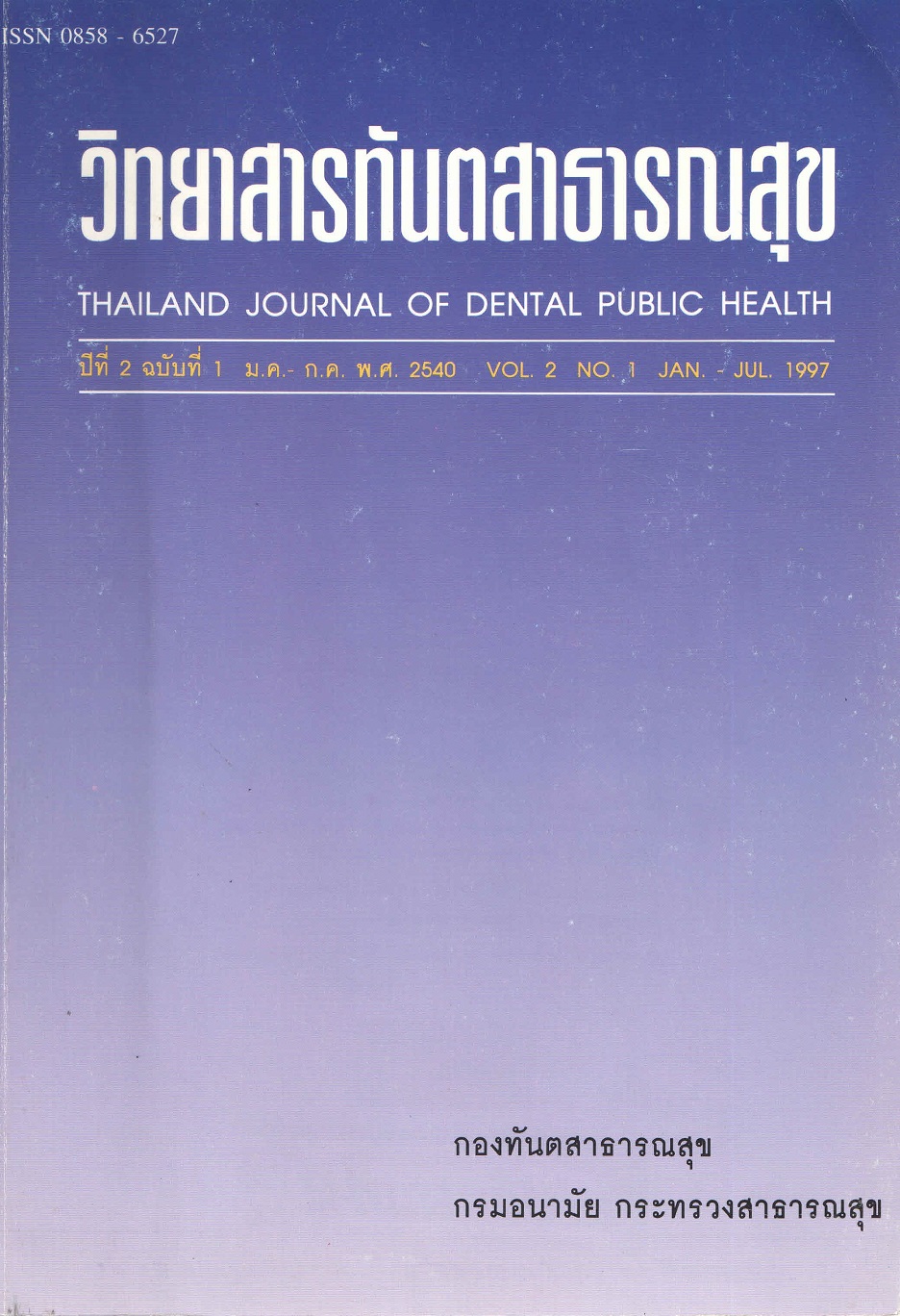The Continuation in Giving Fluoride Drop by Preschool Children's Guardians in Mahasarakharm Province.
Main Article Content
Abstract
The objective of this study was to investigate the continuation in giving fluoride drop (for caries prevention) by preschool children's guardians in Mahasarakham.
1400 guardians of preshool children selected by multi-stage sampling method from every tambon in Mahasarakham were interviewed. The percentage of guardians who had given fluoride drop to their children continually was 35.1, 31.6 percent of the guardians did not complete the recommended duration of giving fluoride drop. Another 32.3 percent of the guardians had never received the supplements. The last i percent of the guardians never used this supplements they received.
Among the guardians who had used this supplement persistently. 84 percent gave fluoride drop to their children everyday or nearly everyday, 62.3 percent gave their children the correct dose. 73 percent of all guardians accepted that their children should take fluoride supplements. 25 percent of all guardians had never received information about fluride before. The factors which affected the guardian's practice significantly were their education level and the relationship between the guardians and their children.
Downloads
Article Details
References
2. ประทีป พันธุมวนิช และยุพิน ส่งไพศาล Dental Caries. Fluorosis and Fluoride in Chiangmai, Thailand. กรุงเทพฯ : คณะทันตแพทยศาสตร์ จุฬาลงกรณ์มหาวิทยาลัย, 2527.
3. พัชราวรรณ ศรีศิลปนันทน์ : แปล. การใช้ฟลูออไรด์ที่เหมาะสมสําหรับมนุษย์ (หน้า 87-98) laluai: suussrunnsWww, 2533.
4. pirununun insowavajunuunanennu.ผลการสํารวจทันตสุขภาพประชาชนจังหวัด Hunan987H 2534. numangonu, 2536. เอกสารโรเนียว.
5. Brian H. Clarkson. Biological Implications of Fluoride. In : Pediatric Dental Care. American Acedemic of Pediatric Dentistry. Jimmy R. Pinkham. Indiana : Evansville, 1991: pp 23-24.
6. Burt, Eklund, Lewis. Fluoride : Human Health and Caries Prevention. In : Dentistry, Dental Practice and The Community. Brian A. Burt. Stephen a. Eklund. Philadelphia :Saunder, 1992 : pp 146-151.
7. Horowitz AM. Community-Oriented Preventive Dentistry Programs That Work. Health Values. 8(1):21-29 : Jan/Feb. 1984.
8. James J. Cral. Flouride Supplementation. In : Pediatric Dental Care. American Acedemic of Pediat “ric Dentistry. Jimmy R. Pinkham. Indiana : Evansville, 1991 : pp 25-26.
9. R. Wendell Evans, John W. Stamm. An Epidemiologic Estimate of the Critical Period during which Human Maxillary Central Incisors Are Most Susceptible to Fluorosis. J Public Health Dent 1991 : 51(4): 251-259.
10. Stephen Goepferd. Enamel Fluorosis. In : Pediatric Dental Care, American Acedemic of Pediatric Dentistry. Jimmy R. Pinkham. Indiana : Evansville, 1991: pp 28-30.


